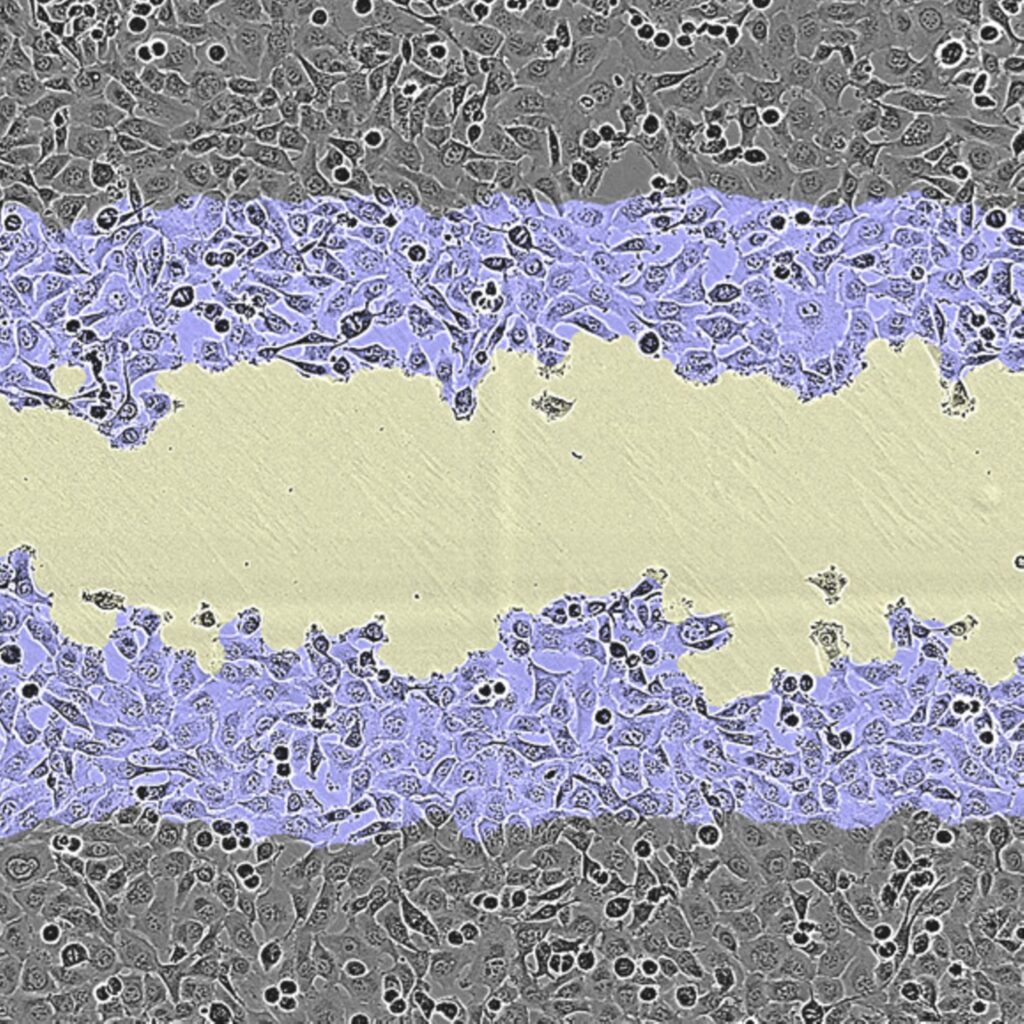
The scratch assay, also known as the wound healing or cell migration assay, is a straightforward and cost-effective in vitro technique used to study the migration of cells. In this assay, a confluent monolayer of cells is “scratched” to create a cell-free area, mimicking a wound. The subsequent migration of cells into this area is then monitored over time to assess the collective cell movement.
Test Details
Procedure
- Cells were cultured in a suitable medium and vessel until they reached a confluent monolayer. This typically involved incubating the cells under optimal conditions (e.g., 37°C, 5% CO2) for a specific duration, allowing them to adhere and form a uniform layer.
- A scratch, or wound, was then introduced into the cell monolayer. This was commonly done using a sterile pipette tip or a specialized tool to create a clear, cell-free gap across the surface. The medium was often replaced to remove any dislodged cells.
- Cell migration into the scratch was monitored over time. Images of the scratch area were captured at regular intervals using microscopy. These images were subsequently analyzed to measure the extent of wound closure and quantify the rate of cell migration.
Contact Us
Have questions about this test? Send us a message and we'll get back to you as soon as possible.

